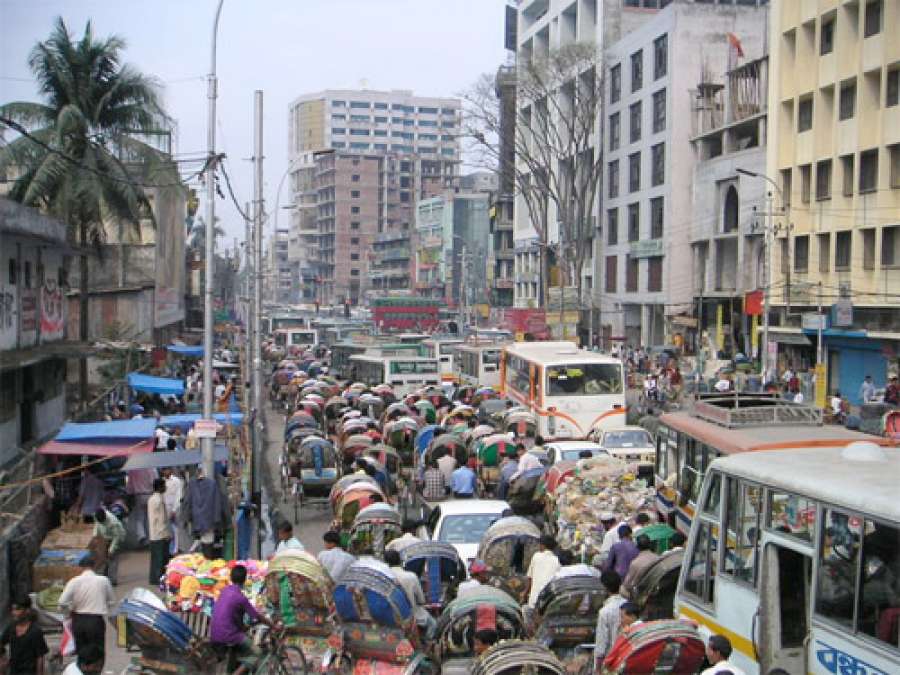It is a matter of grave doubt whether a country that 25 years ago had only 111 miles of four-lane, paved highway can catch up before the number of cars overwhelms the roads.
Traditionally, it has been a country of bullock carts, cows, bicycles and rickshaws, making the automobile a curiosity to the rural poor of the nation.
By 2008, 49 percent of the country’s 2,680,000 miles of roads were paved, but the country’s economy has experienced a slump, along with the Western world. As of 2010, there were 2.7 million cars in India, according to an article posted on the Times of India website.
By 2020, that number is expected to quadruple in eight short years, bringing a level of gridlock to India never before imagined. More and more the population is turning urban and gaining affluence, inspiring many who have never before owned a car to purchase one, The India Times attributes to global research firm LMC Automotive.
"Millions are crossing the wealth threshold to the stage they can afford cars", said Pete Kelly, managing director of LMC Automotive UK. “Short-term variations in economic growth aren't likely to get in the way," he continued.
Today only 11 out of every 1,000 citizens own cars, as compared to 50 percent of Indian nationals and expatriates in the United States, reports the Society of Indian Automobile Manufacturers.
"Buying a car is not just transport, but a status symbol -- it shows your neighbors you've entered car-driving society. It's a sign you've arrived," Buvneesh Bedi, a sales executive at a Japanese showroom, told the Times.
Air pollution in some cities is already visible and sickening, while hulking SUVs, cars and trucks jostle with traditional plebian modes of transportation on the country’s many unpaved and potholed streets and roads.
Traffic conditions in India may actually be more dangerous than those of Russia, where the problem is not the highways, but the drivers. Over 135,500 traffic fatalities were reported in 2010, while another 527,500 injuries were recorded by the government.
"Our cities were never built for a large number of cars," Sarbojit Pal, a fellow at India's Energy and Resources Institute, told the Times. "What's required is a lot more planning, a lot more investment from government and private players."
India’s beleaguered government is playing catch-up in a losing battle to update the nation’s roads. They have set an admirable goal of paving 12 miles of highway every day, but the reality is more like six.
A parliamentary panel reported just last March the goal is a "distant dream."
"The National Highways Authority is not in a position to complete any project... within the scheduled period, although financing has not been an issue. It is adding project after project without achieving the targets," the panel charged.
India has just opened a shiny new six-lane, 90-mile roadway linking New Delhi and Agra, site of the world renowned Taj Mahal. The downside, however, is it required nine years to build a 90-mile highway. At that rate, they will never catch up with the growth in ownership of cars.
Over $1 trillion in government funds have been pledged to upgrading India's inadequate infrastructure over the next five years, including roads, airports, seaports and more.
Some authorities are already calling for more public transit programs to lighten the load, but that requires even further funding.
"Even if people buy cars, they need other options to using them," Anumita Roychowdhury, executive director of India's Centre for Science and Environment told the Times of India. "Otherwise, car growth will be unsustainable from a health, pollution level, traffic fumes and livability aspect. Road congestion will be unbearable."
None of this is likely to faze the person who has finally achieved a level of affluence that allows them to buy a car.
"We're at the take-off stage," Roychowdhury added.
Sunil Kumar, 24, is one such – a customer relation’s manager at a bank about to be married. He plans to trade in his motorcycle for a small car.
Motorized two-wheel vehicles make up 70 percent of the market in India, also vying for room on the nation’s roads. but better able to travel the unpaved ones.
"It's a great feeling to be able to buy a car," he said gripping the wheel of a slick new hatchback in Delhi.
Nothing the government can say or do can change that.





